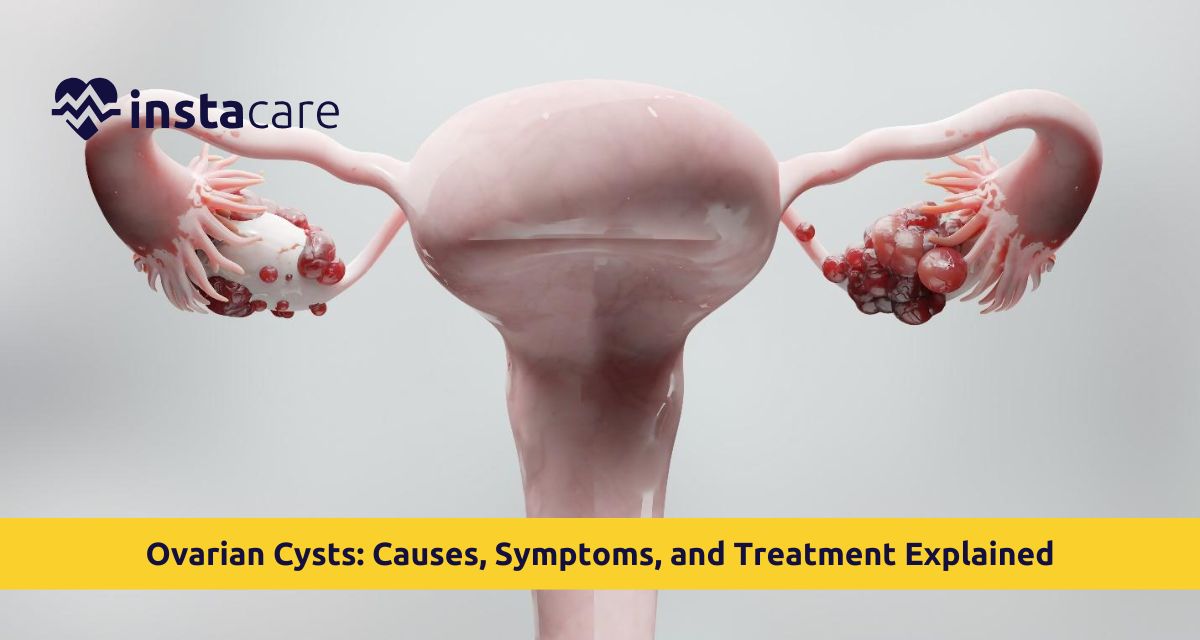What Are Ovarian Cysts?
Ovarian cysts are liquid-filled pouches or blood or tissue within an ovary. Reproductive organs are paired and provide eggs and hormones. Most of the cysts are noncancerous and normal components of menstrual cycles and resolve spontaneously within a few months without treatment. They are as tiny as a pea and as large as a grapefruit. Ovarian cysts form in nearly every woman at some point, usually without their even knowing it. They occur more frequently in women of childbearing age but appear in any age range.
Common Types of Ovarian Cysts
Functional Ovarian Cysts
These are the most frequent types of ovarian cysts and present in the regular menstrual cycle. Follicular cysts develop when the follicle that releases an egg is unable to open. Corpus luteum cysts develop when the follicle is obstructed after releasing the egg with fluid. Functional ovarian cyst will disappear in one to three menstrual cycles without treatment.
Dermoid Cysts (Teratomas)
They contain hair, skin, or teeth within them since they are formed from embryonal cells. They increase in size but are mostly benign and need to be removed.
Cystadenomas
These are formed from the ovarian tissue and hold water or mucus fluid within them. They become an enormous size and painful but are mostly benign.
Endometriomas
They are also known as chocolate cysts since they occur when endometrial tissue on the ovaries fill with old blood. They are associated with endometriosis and cause debilitating pain and infertility.
Polycystic Ovaries
PCOS produces many small cysts through hormonal interference.
PCOS interferes with fertility, metabolism, and well-being.
Complex Ovarian Cysts
Large ovarian cysts contain fluid and solid elements. Complex ovarian cyst benign but need more intense follow-up to rule out malignancy, especially in postmenopausal women.
Symptoms of Ovarian Cysts
Ovarian cysts are typically symptomatic and are detected on the pelvic examination or on imaging. When present, ovarian cyst symptoms are:
- Pelvic Pain Aching, burning, or painful, one-sided low abdominal pain is the best descriptive term for symptomatic cysts. It is chronic or intermittent and worsened by menstruation or coitus.
- Fullness and Bloating Large cysts cause fullness, heaviness, or persistent fullness of the abdomen. Clothing near the waistband is tight.
- Menstrual Irregularities Cysts lead to heavier, lighter, or irregular menses. Intermenstrual spotting in most women.
- Pressure on the Bowel or Bladder Large cysts also pressure adjacent organs and can lead to constipation or frequent urination.
- Symptoms of a Ruptured Ovarian Cyst Sudden pain in the pelvic area due to ruptured ovarian cyst can present with fever, dizziness, nausea, and vomiting. Internal bleeding is an emergency.
- Ovarian Torsion Sudden twists of the ovary and compromise of its blood supply by large cysts. It causes intense, stabbing pain with nausea and vomiting and requires emergency surgery.
Causes and Risk Factors
Imbalances in Hormones Causation of an ovarian cyst is generally based on changes occurring in the menstrual cycle in the hormone levels. Drugs that stimulate the ovary, like drugs that render a person fertile, permit functional cysts to form. Understanding causes of ovarian cysts helps in prevention strategies.
- Pregnancy Cysts They can be able to maintain pregnancy until placenta development. These are likely to settle by the second trimester.
- Endometriosis Endometrial tissue develops outside the uterus, over the ovaries, for instance, to create painful endometriomas and infertility.
- Pelvic Infections Rarely widespread infection invades ovaries to yield infected cysts that need antibiotics.
- Recurrent Ovarian Cysts Women who have experienced ovarian cysts are highly susceptible to recurrence, suggesting genetic or hormonal susceptibility.
Read More: Why Is My Period Late
Diagnosis
Pelvic Exam
Pelvic physical exam is used by physicians for ovarian cyst diagnosis by palpation of mass or abnormality over ovaries.
Ovarian Cyst Ultrasound
Abdominal or transvaginal ultrasound is the first imaging test used to diagnose ovarian cyst. Ovarian cyst ultrasound can assess size, location, and type of cyst. Ultrasound distinguishes ovarian cyst vs tumor by showing internal architecture and vascular patterns.
Blood Tests
Blood tests to test for CA-125 measure a protein elevated in cancer of the ovary. They are elevated in postmenopausal females or in complex cysts and need to be investigated.
CT or MRI Scans
Complete scans are performed with special scanning if the ultrasound is not diagnostic or if a procedure is to be performed.
Treatment Options for Ovarian Cysts
Watchful Waiting
Most of the functioning cysts will spontaneously resolve within 1-3 months without treatment. Routine follow-up ultrasounds are done with doctors to await resolution. This is demonstrated in small and simple cysts in premenopausal women.
Pain Relief of Ovarian Cyst
Pain is controlled with non-prescription drugs such as ibuprofen for ovarian cyst pain relief. Pain is also relieved by warmth from use of heating pads on the lower abdomen. Rupture of the cyst should be avoided through lifting heavy weights.
Hormonal Birth Control
Birth control pills prevent new functioning cyst development through prevention of ovulation. They do not make a developing cyst smaller but reduce recurrence rate.
Surgery for Ovarian Cyst All cysts greater than 5-10 cm in diameter, over a few months' duration, very symptomatic, significantly elevated on ultrasound, or in postmenopausal women are thought to be worth operating on. Ovarian cyst surgery options include:
- Laparoscopy cures cysts with small incisions and quick recovery
- Laparotomy through big incisions is used in very big or suspected cancerous cysts
- Doctors attempt to save the ovary if possible and remove the cyst alone
- Oophorectomy removes the entire ovary in cancer
Emergency Treatment Ruptured cysts and intra-abdominal bleeding or torsion of the ovary require surgery as soon as possible to prevent complications. Proper ovarian cyst treatment ensures better outcomes.
Ovarian Cyst Prevention
Although the ovarian cysts cannot be prevented, they can be prevented from re-occurring. The birth control pills prevent the formation of functional cysts by controlling the ovulation. The pelvic exam prevents the identification of the cysts in the early stage for effective ovarian cyst prevention.
Control by normal weight management keeps them away. Food intake and medics to cure such disease like PCOS avoid their incidence. Pelvic infection at the beginning stage is treated so that they may not turn into abscesses.
Can Ovarian Cysts Cause Infertility?
Ovarian cysts do not impair fertility in most cases. PCOS cysts and endometriomas are usually obstructive. Endometriosis causes ovulation-suppressing scarring and inflammation. PCOS causes irregular ovulation, preventing conception. The question can ovarian cysts cause
infertility depends on the type and severity. Therefore, most women without ovarian cysts can conceive. Large cysts to be resected can destroy ovarian tissue and drain egg reserve. The majority of women become fertile following removal of cysts.
Conclusion
Ovarian cysts are common, and they are usually benign functional cysts that will dissolve on their own. To be knowledgeable about symptoms is to have some idea of when medical assessment is indicated. Although most cysts only require observation, symptomatic or growing cysts can be treated from medication to surgery. Good gynecologic care makes early diagnosis and proper treatment possible, keeping reproductive organs healthy as well as preventing complications.
Please book an appointment with the
Best Gynecologist in Lahore, Karachi, Islamabad, and all major cities of Pakistan through
InstaCare, or call our helpline at 03171777509 to find a verified doctor for your disease.

